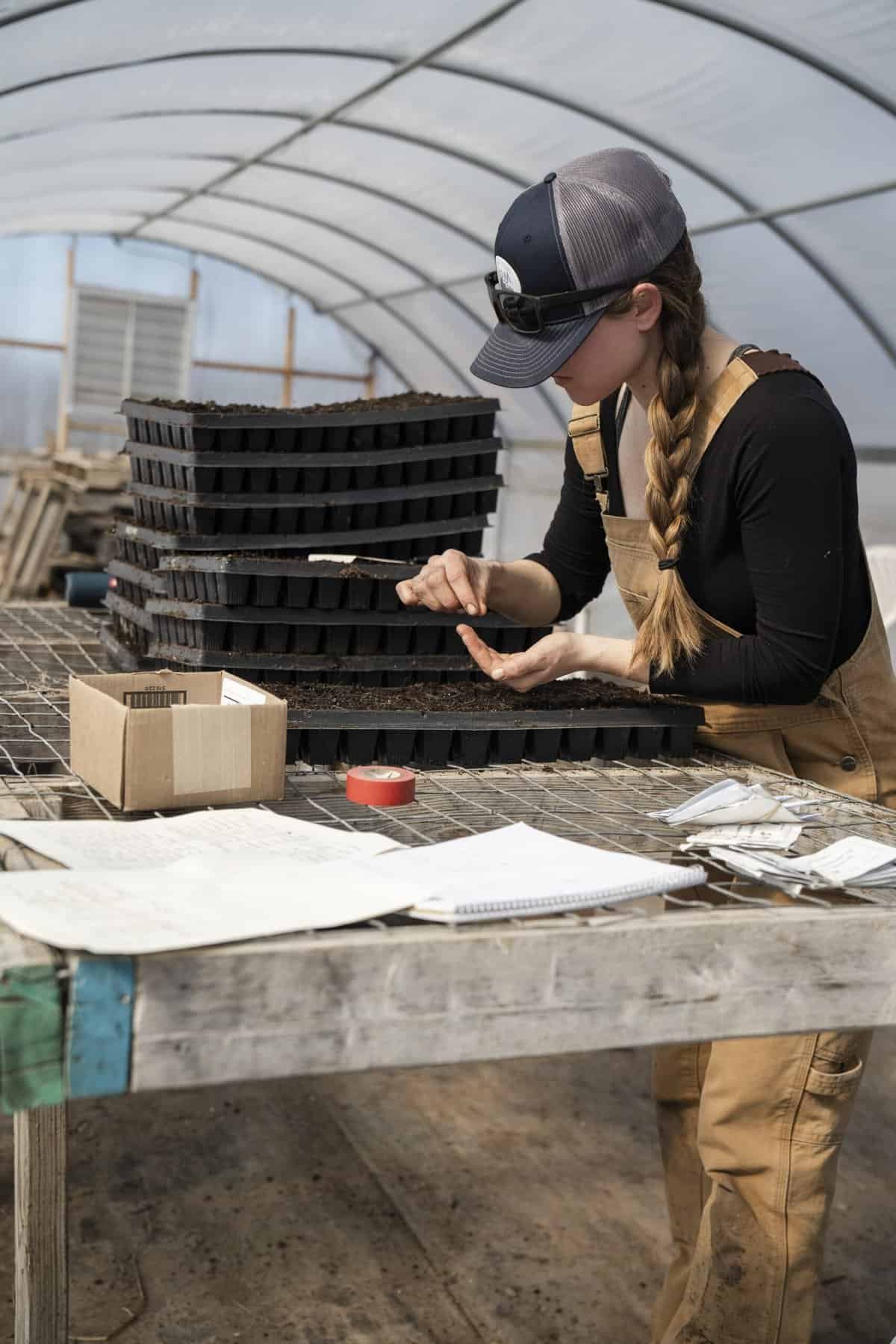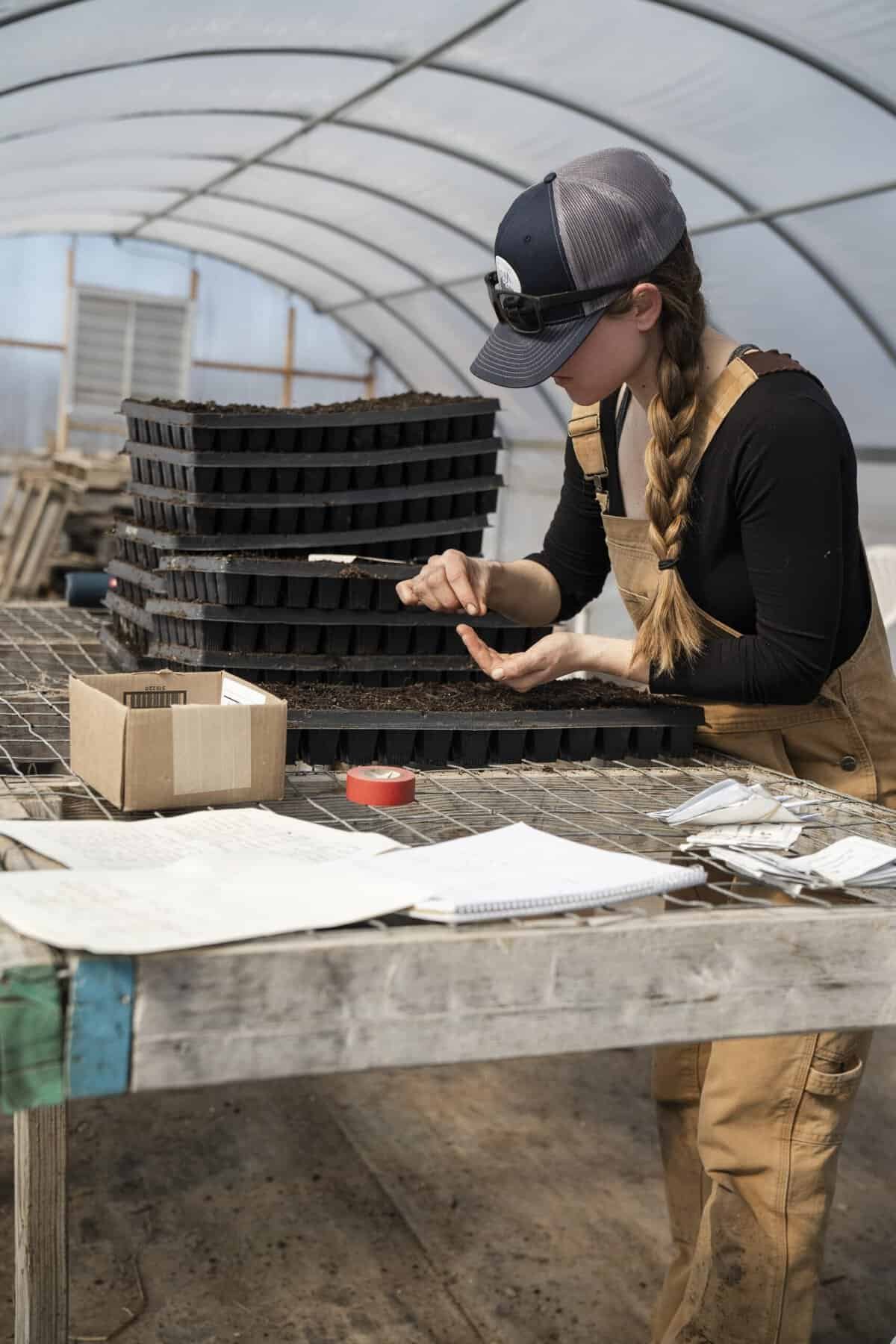If you’re a fan of gardening or simply curious about plant care, you may have come across the practice of mulching. But have you ever wondered why mulching is beneficial specifically for nopal plants? Mulching around nopal plants offers a myriad of advantages, from conserving moisture and improving soil fertility to preventing weed growth and protecting plant roots. In this article, we’ll explore the numerous benefits that mulching provides for nopal plants, allowing you to enhance the health and vitality of your own prickly pear cacti. So, grab your gardening gloves and prepare to discover the wonders of mulching!
Water conservation
Reduced evaporation
Mulching around nopal plants can significantly reduce evaporation of water from the soil. By covering the soil surface with a layer of organic mulch, such as wood chips or straw, you create a protective barrier that helps to retain moisture in the soil. When water is applied to the soil, the mulch acts as a shield, slowing down the evaporation process and keeping the moisture within reach of the plant roots. This can be especially beneficial in hot and dry climates where water conservation is a priority.
Retains moisture
In addition to reducing evaporation, mulching also helps to retain moisture in the soil. The layer of mulch acts as an insulating blanket that prevents water from quickly evaporating from the soil surface. This allows the water to slowly permeate the soil, giving the plant roots ample time to absorb the moisture. By retaining moisture in the soil, mulching helps to ensure that nopal plants have a steady and consistent supply of water, even during dry periods. This can be particularly advantageous in regions where water scarcity is a concern.
Improves water absorption
Another benefit of mulching around nopal plants is that it improves the absorption of water by the soil. The presence of mulch helps to create a more favorable environment for water penetration. It helps to break up the soil surface, preventing runoff and allowing water to soak into the soil instead. As a result, the roots of the nopal plants can access the water more effectively, promoting healthy growth and development. Improved water absorption means that less water is wasted and more is utilized by the plants, contributing to water conservation efforts.
Weed suppression
Prevents weed growth
One of the advantages of mulching around nopal plants is that it helps to prevent the growth of weeds. Mulch acts as a barrier, preventing weed seeds from germinating and emerging from the soil. By depriving weeds of sunlight and space to grow, mulching can significantly reduce the amount of time and effort spent on weed control. This is particularly important for nopal plants, as they can be sensitive to competition from weeds, which may hinder their growth and overall health.
Reduces competition
In addition to preventing weed growth, mulching also reduces competition for resources between weeds and nopal plants. Weeds often compete with the desired plants for water, nutrients, and sunlight. By mulching around nopal plants, you can create a clear separation between the nopal plants and any potential weeds. The layer of mulch ensures that the nopal plants can receive the necessary resources without having to compete with unwanted vegetation. This can significantly improve the growth and productivity of the nopal plants.
Saves time and effort
Mulching around nopal plants not only prevents weed growth and reduces competition but also saves time and effort on weed control. Weeding can be a time-consuming and labor-intensive task, requiring frequent removal of unwanted vegetation. However, by mulching, you minimize the need for manual weeding and the use of herbicides. This allows you to spend more time enjoying the benefits of your nopal plants and less time battling with unwanted weeds. Mulching offers a low-maintenance solution for weed suppression, making it an efficient and effective method.
Temperature regulation
Insulates the soil
Mulching around nopal plants provides insulation for the soil, helping to regulate and maintain a more stable temperature. A layer of mulch acts as a protective barrier, reducing the impact of extreme temperatures on the soil. In hot climates, the mulch provides shade and prevents the soil from overheating. In colder climates, it acts as an insulating layer, protecting the soil from freezing temperatures. By regulating soil temperature, mulching creates an environment that is more conducive to the optimal growth and development of nopal plants.
Protects roots from extreme temperatures
The layer of mulch not only insulates the soil but also provides protection for the roots of nopal plants against extreme temperatures. In hot weather, the mulch helps to cool the soil, preventing the roots from being exposed to excessive heat and potential damage. Similarly, in cold weather, the mulch acts as a buffer, shielding the roots from freezing temperatures. By providing this protective layer, mulching ensures the longevity and health of the nopal plants by safeguarding their sensitive root systems.
Creates a more stable environment
Mulching around nopal plants creates a more stable and consistent environment for their growth. The insulation and temperature regulation properties of mulch help to minimize temperature fluctuations, providing a more constant and favorable environment for the nopal plants. This stability encourages steady growth, reduces stress on the plants, and improves their overall resilience. By creating a more stable environment, mulching contributes to the long-term health and vitality of nopal plants.
Organic matter enrichment
Adds nutrients to the soil
Mulching around nopal plants can enrich the soil with organic matter, which provides essential nutrients for plant growth. As the mulch breaks down over time, it releases nutrients into the soil, making them available to the nopal plants. This natural process of nutrient release helps to improve the fertility of the soil, ensuring an abundant supply of essential elements for the nopal plants. By using organic mulch, such as compost or leaf litter, you can introduce a steady source of nutrients to the soil and promote the overall health and productivity of the nopal plants.
Improves soil structure
In addition to adding nutrients, mulching also improves the structure of the soil around nopal plants. The layer of organic mulch gradually decomposes, enhancing the soil’s ability to retain moisture and drain excess water. This improvement in soil structure allows for better aeration and root development. The loosened soil provides a favorable environment for the penetration of roots, which helps the nopal plants establish a robust and extensive root system. Improved soil structure is essential for the long-term health and stability of the nopal plants.
Encourages beneficial soil organisms
Mulching around nopal plants creates a habitat for beneficial soil organisms, such as earthworms and microorganisms. These organisms play a vital role in maintaining the health of the soil ecosystem. As the organic mulch decomposes, it provides a food source for these beneficial organisms, attracting them to the area around the nopal plants. Their presence helps to break down organic matter further, promoting nutrient cycling and improving soil health. Encouraging beneficial soil organisms through mulching fosters a thriving and balanced soil ecosystem, which supports the growth and productivity of nopal plants.

Erosion control
Prevents soil erosion
Mulching serves as a protective layer against soil erosion, particularly on sloped areas or embankments. The layer of mulch acts as a shield, preventing rainwater from directly impacting the soil surface and causing erosion. Instead, the mulch absorbs the impact of rainfall, allowing water to gradually soak into the soil. By reducing the force of rainwater on the soil, mulching helps to prevent erosion and preserve the integrity of the soil structure. This is particularly important for nopal plants, as erosion can lead to nutrient loss, reduced water-holding capacity, and overall instability.
Stabilizes embankments or slopes
Mulching around nopal plants can stabilize embankments or slopes, providing stability and preventing soil movement. The layers of mulch act as an anchor, reducing the likelihood of soil slippage or landslides. The weight and density of the mulch help to secure the soil, preventing erosion and keeping the soil structure intact. By stabilizing embankments or slopes, mulching creates a safer and more secure environment for the growth of nopal plants, protecting them from potential damage or displacement.
Protects bare soil from heavy rain
Another benefit of mulching for nopal plants is that it protects bare soil from heavy rain. Without mulch, the impact of heavy rainfall can lead to soil compaction and the formation of crusts on the soil surface. This can hinder water absorption and promote runoff, preventing the nopal plants from effectively accessing the water they need. By mulching, you provide a protective layer that absorbs and distributes the force of heavy rain, allowing the water to penetrate the soil slowly without causing damage. This protection ensures that the nopal plants can thrive even during periods of intense rainfall.
Root protection
Provides a cushioning layer
Mulching around nopal plants provides a cushioning layer that helps to protect their delicate root systems. The layer of mulch acts as a buffer, absorbing the impact of external factors, such as foot traffic or mechanical damage. This protection is particularly important during activities such as gardening, mowing, or maintenance, where the root systems of nopal plants may be at risk of accidental damage. By providing this cushioning layer, mulching ensures the longevity and health of the nopal plants by safeguarding their vulnerable root systems.
Reduces mechanical damage
In addition to providing a cushioning layer, mulching also reduces the risk of mechanical damage to the roots of nopal plants. The layer of mulch acts as a barrier that prevents unintended damage from tools, such as shovels or hoes, during gardening tasks. Mulch creates a visible and physical separation between the soil surface and any potential sources of mechanical damage. By reducing the risk of accidental injury, mulching protects the root systems of nopal plants, allowing them to grow and thrive without interference or setbacks.
Creates a natural barrier
Mulching around nopal plants creates a natural barrier that helps to protect their roots from external threats. The layer of mulch acts as a deterrent for pests, such as burrowing animals or insects, that may harm the root systems. The presence of mulch makes it less appealing for pests or animals to dig or tunnel near the nopal plants. This natural barrier ensures that the root systems remain undisturbed and allows the nopal plants to focus on their growth and development without the risk of damage from external factors.
Pest and disease prevention
Acts as a physical barrier
Mulching around nopal plants acts as a physical barrier, preventing pests or insects from reaching the plants. The layer of mulch creates a barrier that pests find difficult to cross or penetrate. This can be especially beneficial in preventing soil-borne pests or insects that may attack the roots of nopal plants. By acting as a physical deterrent, mulching helps to protect the nopal plants from potential pest infestations, reducing the risk of damage or disease.
Reduces contact with pathogens
In addition to acting as a physical barrier, mulching around nopal plants reduces the contact between the plants and potentially harmful pathogens. Mulch prevents soil splashing, which can carry pathogens onto the plants during rainfall or irrigation. By minimizing contact with pathogens, mulching helps to prevent the spread of diseases and keeps the nopal plants healthy and thriving. This is crucial for the long-term success of the nopal plants, as diseases can weaken the plants, reducing their productivity and overall vitality.
Discourages pests or insects
Another benefit of mulching is that it discourages pests or insects from infesting nopal plants. Certain types of mulch, such as cedar chips or certain natural aromatic materials, emit scents or oils that act as natural repellents for pests and insects. These scents can deter insects or pests from approaching the nopal plants, reducing the risk of damage or infestation. By discouraging pests or insects, mulching helps to maintain the health and vigor of the nopal plants, allowing them to grow and thrive without the burden of pest-related issues.
Nutrient cycling
Recycles organic material
Mulching around nopal plants facilitates nutrient cycling by recycling organic material back into the soil. As the mulch breaks down over time, it decomposes into organic matter, which enriches the soil with essential nutrients. This decomposition process is facilitated by soil microorganisms and beneficial insects, which break down the mulch into its constituent components. By recycling organic material, mulching promotes nutrient cycling, ensuring that the nutrients are continuously available for the nopal plants. This natural recycling process sustains the fertility of the soil and supports the healthy growth of the plants.
Returns nutrients to the soil
As the organic mulch decomposes, it releases nutrients back into the soil, replenishing the nutrient reserves. These nutrients, which may have been depleted over time, are made available to the nopal plants for uptake and utilization. This replenishment of nutrients is essential for the continuous growth and development of the plants. By returning nutrients to the soil, mulching ensures a sustainable supply of essential elements that support the overall health and productivity of the nopal plants.
Enhances plant growth
By facilitating nutrient cycling and returning nutrients to the soil, mulching enhances the growth of nopal plants. The availability of a consistent supply of essential nutrients promotes vigorous growth and development. The replenished nutrients support various physiological processes within the plants, such as photosynthesis, root development, and flowering. Additionally, the improved soil fertility and structure resulting from mulching further contribute to the overall growth and productivity of the nopal plants. Overall, mulching plays a critical role in enhancing plant growth, resulting in healthier and more robust nopal plants.

Improved aesthetics
Provides a visually appealing appearance
Mulching around nopal plants can significantly enhance the visual appeal of the landscape. The layer of mulch provides a clean and uniform appearance, creating a visually pleasing contrast against the vibrant colors of the nopal plants. Additionally, mulch can be chosen in various colors, textures, or materials to complement the overall design and theme of the landscape. By providing a visually appealing appearance, mulching adds an aesthetic dimension to the environment, making it more enjoyable and engaging.
Enhances landscape design
Mulching can play a crucial role in enhancing the overall design and aesthetics of the landscape. With the ability to choose from various types of mulch, such as wood chips, gravel, or decorative stones, you can create different textures, colors, or patterns that complement the surrounding features. Mulch can be used to define pathways, highlight focal points, or create visual boundaries within the landscape. By incorporating mulch into the landscape design, you have the opportunity to express your creativity and create a cohesive and visually pleasing outdoor environment.
Promotes a well-maintained look
Mulching around nopal plants helps to promote a well-maintained and cared-for look. The neat and defined appearance created by the mulch gives the impression of an organized and purposeful landscape. By covering the soil surface and suppressing weed growth, mulching creates a tidy and groomed look that is often associated with a well-maintained garden. This visual impact can contribute to a positive impression of the overall space, reflecting attention to detail and a commitment to the health and upkeep of the nopal plants.
Cost savings
Reduces irrigation requirements
Mulching around nopal plants can lead to significant cost savings by reducing the amount of water needed for irrigation. The layer of mulch helps to retain moisture in the soil, reducing the frequency and duration of irrigation. By reducing the water requirements, mulching can lower water bills and conserve this precious resource. This is particularly valuable in regions where water scarcity is a concern, as mulching helps to make the most efficient use of available water resources.
Limits the need for chemical controls
Another cost-saving benefit of mulching is that it can help to limit the need for chemical controls, such as herbicides or pesticides. The layer of mulch acts as a natural barrier against weed growth and pest infestations. By preventing weed growth and discouraging the presence of pests or insects, mulching reduces the reliance on chemical controls for weed management or pest control. This not only saves money spent on expensive chemical products but also promotes a more sustainable and environmentally friendly approach to garden maintenance.
Saves money on mulch replacements
Furthermore, mulching around nopal plants can save money on mulch replacements. While the mulch layer will gradually decompose over time, it can still provide its benefits for a considerable period, depending on the material used. By choosing high-quality and long-lasting mulch, you can ensure that it remains effective for an extended period, reducing the need for frequent mulch replacements. This saves money that would otherwise be spent on purchasing new mulch more frequently. By choosing a cost-effective mulch option and making the most of its longevity, you can enjoy prolonged cost savings over time.
In conclusion, mulching around nopal plants offers a wide range of benefits that contribute to their overall health, well-being, and productivity. From water conservation and weed suppression to temperature regulation and root protection, mulching provides an array of advantages that support the growth and thriving of nopal plants. Additionally, mulching enhances the aesthetic appeal of the landscape, promotes cost savings through reduced irrigation requirements and limited chemical controls, and contributes to the overall sustainability of gardening practices. By incorporating mulching into your gardening routine, you can maximize the benefits for your nopal plants and create a beautiful and sustainable outdoor environment.



